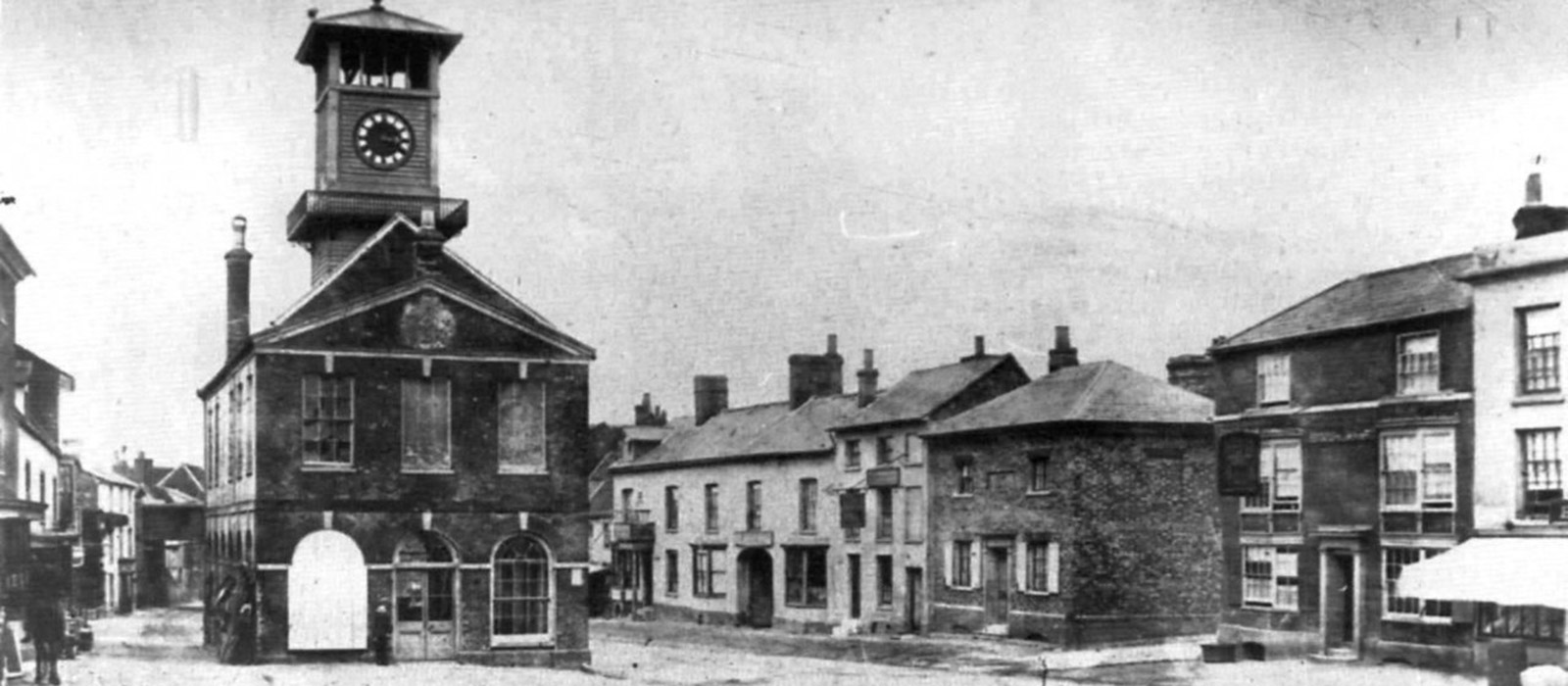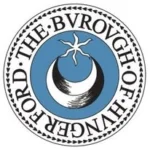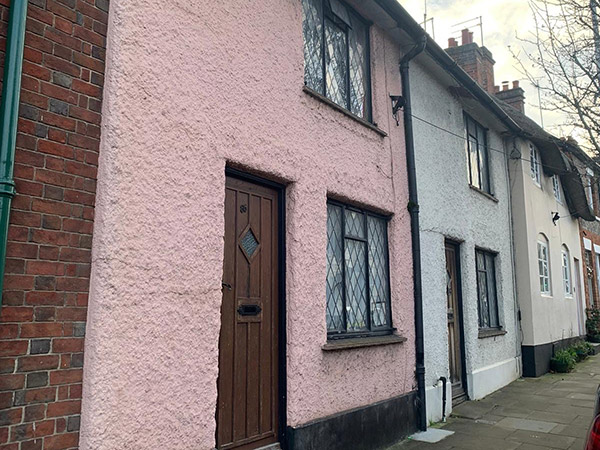
1. The oldest house in Hungerford probably dates at 1449?
Originally 85 & 86 High Street were one double bay cruck-frame house. The Cruck frame timbers date back to the 14th Century. 86 is the only one left, and is now a single bay open hall dwelling with smoke damaged timbers in the roof. 86 is a commoner property.
Dendrochronological study of 86 dated timbers to the winter of 1448/9 and the house was most likely then built in 1449, just 50 years after John O’Gaunt died.
2. Who owns Hungerford Town Hall?
Unusually, Hungerford Town Hall is owned and run by The Town and Manor of Hungerford and not by the Hungerford Town Council or West Berkshire Borough Council. The upkeep of this town hall is financed entirely by the Town and Manor (a charity) not the taxpayer.
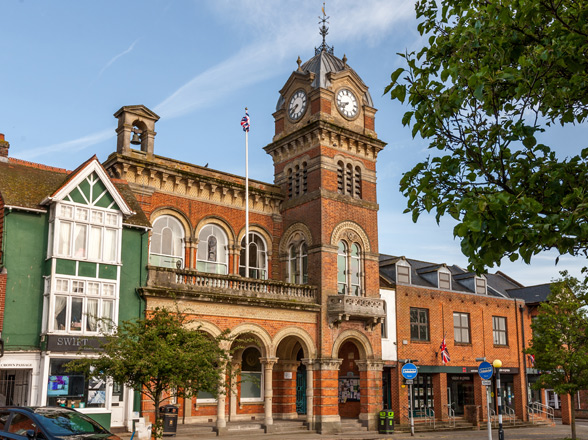
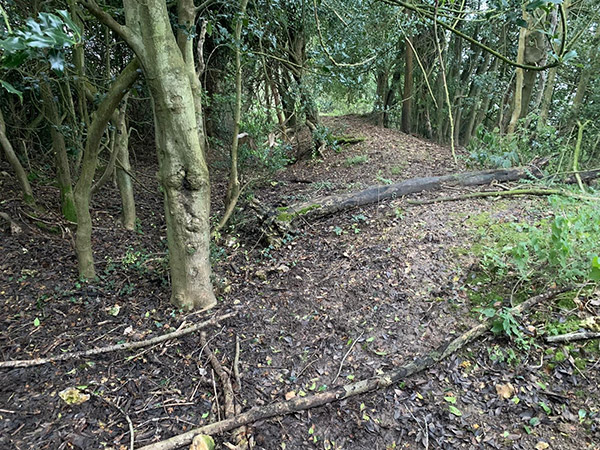
3. Another road on Hungerford Common?
On an October 2013 Carter Jonas map of Hungerford Common, there is a linear structure named ‘Old Road to Kintbury’. It appears to follow the line of scrub denoting the Everlong boundary, (Everlong being the ‘Everland Furlong’ that was added to the Common in 1806). A sketch map of 1750 suggests this may in fact have been the ‘old and great market road from Hungerford to Newbury’.
Today this linear structure consists of part of a ditch and parallel banks following the line from west to east, with scrub and large trees covering much of its length.
4. Where did the name ‘Undy’s’ come from?
The Kennet Valley Wetland Reserve currently being planned by the Town and Manor is on a piece of water meadow named ‘Undy’s Meadow.’ Far from being a cheeky reference to undergarments, this name has its roots in Norman England. An extensive investigation into this name was undertaken by Norman Little in which he concluded that the name evolved as follows as a result of different pronunciations, transcriptions and spellings over the centuries:
Hommedieu 13/14 C A (French) Norman family name owning land from Little Bedwyn to west Hungerford.
Hommenden
Hummenden 1280
Ummenden time of Edward 1
Homeden
D’Ommenden – being used as a place name
Also recorded at this time as Homadeux and Omisdewes **
Jon Curr of Homedewe in Wiltshire but of ‘Helme’ in Berkshire 1557
Undy’s Farm 1565
Huntly’s Farm 1812-24
Undy’s Farm and mead 1848
**In Southampton in 1543 a man of civic importance, Stephen Omedeux was noted as sometimes having his name written, and no doubt pronounced, Undey. Possibly part of the Wiltshire family.
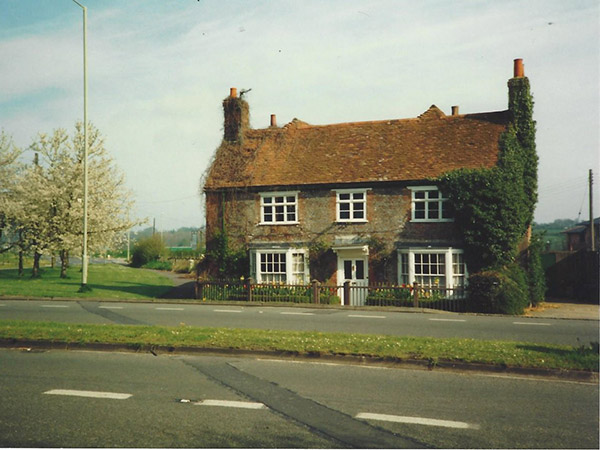
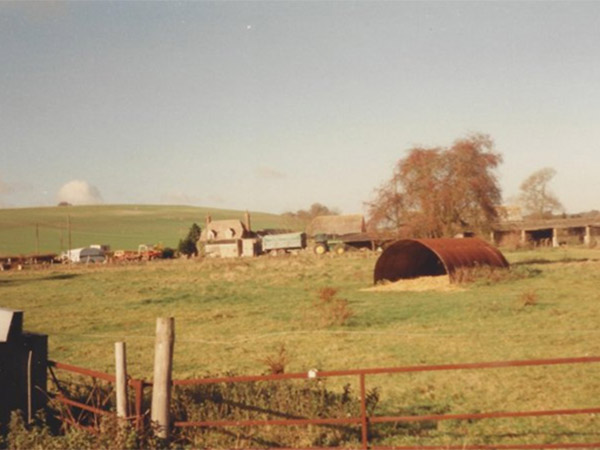
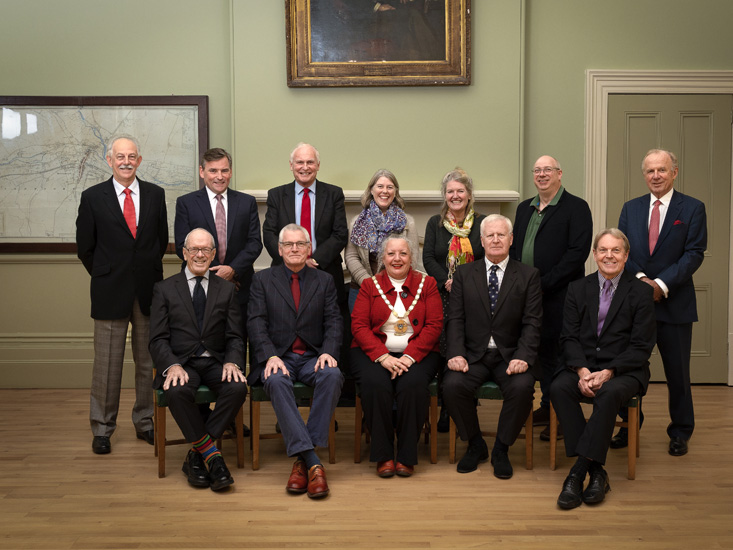
5. Route to Constable
Before any Commoner can become Constable they must have held all of the offices of the Hocktide Court, i.e. Tithingman, Ale Taster, Bailiff and Portreeve. A tithingman automatically becomes Ale Taster the following year but further progression through the ‘ranks’ can take some time. The current Constable, Julie Lloyd, was Tithingman in 2010, Ale Taster in 2011 but not Constable until 2022.
6. Origin of the term Constable
Historically, the title comes from the Latin comes stabuli (attendant to the stables, literally count of the stable) and originated from the Roman Empire; originally, the constable was the officer responsible for keeping the horses of a lord or monarch. The title was imported to the monarchies of medieval Europe, and in many countries developed into a high military rank and great officer of State (e.g. the Constable of France, who was the commander-in-chief of all royal armed forces (second to the king) until prime minister Cardinal Richelieu abolished the charge in 1627.
Historically, a constable could also refer to a castellan, the officer charged with the defence of a castle. Even today, there is a Constable of the Tower of London. Since Hungerford was never a fortress nor did it ever possess a castle, the title of Constable in its case seems to have been a perhaps complimentary extension of the term to a non-fortified royal property.
The special nature of the Constable’s powers and functions are set out in the opening pages of a register of the Hungerford Hocktide Court under the heading Certayne Ancient Customes Perpetuallie Remayninge dated 24 Eliz [1582] and by their title they clearly relate to practices long established.
Article 6 reads as follows: ‘There is a Corporation called and known by the name of Constable and Burgesses and the Constable for the time being is the highest officer there, who during his authority doth and ought likewise to bear and supply within the jurisdiction of the town the offices of a Coroner, Escheator, Feodary, and Clerk of the Market and may deal in everything there incident unto the same several offices, and hath all other officers there subject under him and may command every or any of them to be assistant unto him in or about the execution of any cause or matter, and likewise hath the receipts of all common fines and other rents and duties whatsoever and who always at the said Hocktide Court doth and ought to make his full account of all receipts and things wherewith he may be charged and the overplus remaining upon such account (allocatis allocando) ought to be delivered to the new Constable then chosen to the use of the inhabitants.’
It will be seen that these are sweeping powers; even without the additional offices of Coroner, Escheator, Feodary, Clerk of the Market, the powers of the Constable vis à vis the Court itself which elected him were in those days almost dictatorial. In this concentration of authority we may see how much the Constable of a royal township resembled the governor of a royal castle and how greatly his position differed from that of a Mayor and corporation in towns elsewhere. It is the almost unique load of responsibility involved in the office of Constable, together with the historical associations of its antiquity, which has given the office today its honourable and special status
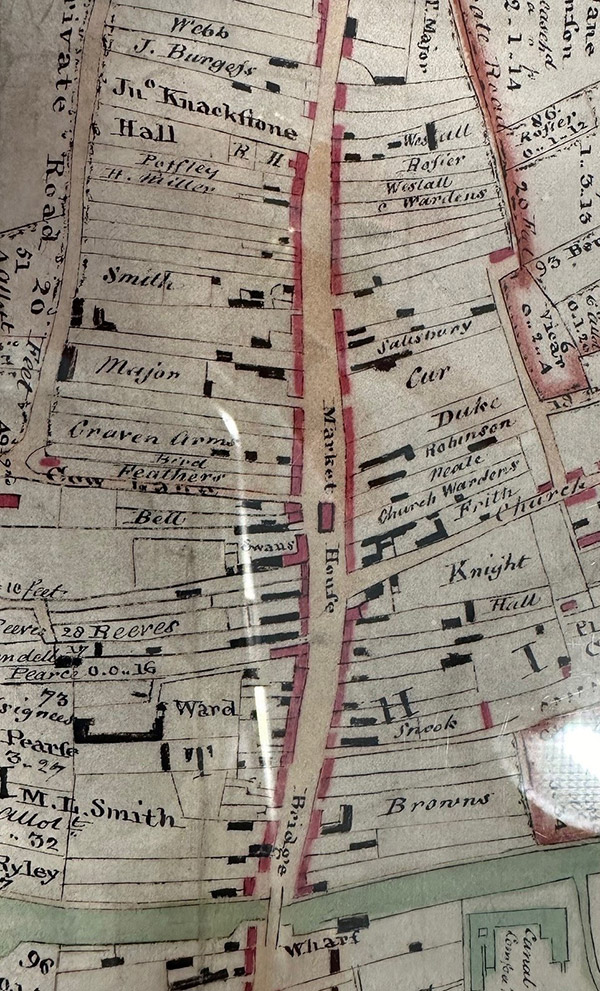
7. 2 Commoner’s rights attach to the Railway Bridge
The ancient rights of the Commoners are attached to the houses where the inhabitants lived and carried out their trades. While the original houses have long since gone, the rights remain with the houses or structures that have taken their place. It is because of this that Railtrack has 2 rights, as the bridge occupies the space of two commoner properties, one on each side of the High Street.
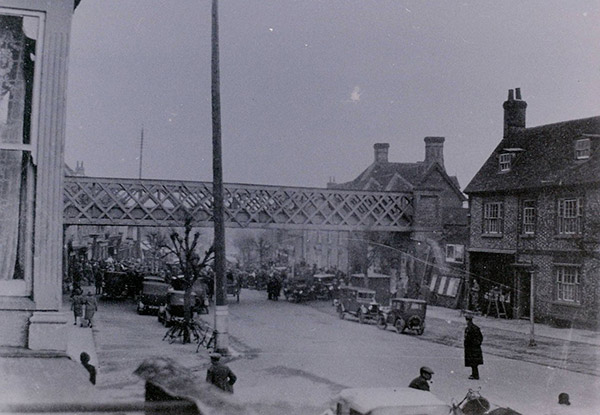
8. Hungerford once had a female Town Crier
The Bellman is one of the ancient offices of the Town and Manor of Hungerford. His role doubles as the Town Crier, as well as Assistant Bailiff, Beadle, and Crier for the Hocktide Courts. There is a board in the Town Hall which records the names and dates of all the Bellmen and Town Criers of Hungerford. In 1956 the board records that Jean Tubb, nee Bushnell was Town Crier. Jean was the daughter of Sidney Bushnell who, like his father before him, was also Town Crier. Jean married Robin Tubb and soon handed her duties over to Robin, who was Town Crier from 1957 until he died in 2012. At Hocktide 2012, it was announced that the post would be taken by a nephew of Robin Tubb, Julian Tubb, and the post therefore continues in the same family line. At the time of writing, the family’s tenure has lasted 143 years. Julian is training his daughter Lillian to take over when it’s time, but will have to wait some time before handing over his uniform and staff, as Lillian is only just 5!
9. Land at Bulpit Lane
Did you know that the ground that comprises the town’s Football Club, Cricket Club, the practice pitch, the WWII War Memorial the Swimming Pool House (yes, there used to be an outdoor swimming pool in this area) and the Skate Park actually belongs to Town and Manor? In 1951 the Town and Manor entered into a 99 year lease with Hungerford Town Council of this whole area (after the Commoners agreed to suspend their rights to graze it) to facilitate the provision of space for returning soldiers to exercise, following the passing of the Physical Recreation Act of 1946 by the government. The amount charged each year for the rental of the ground is ten shillings (£0.50 in new money).
10. From Elder Stubbe to Irish Style
The extent of the Fishery on the river Kennet and Dunn, that Commoners had the right to fish in 1611 originally was from a stubbe called Elder Stubbe (a tree stump) at Leverton to Irish Style below Kintbury. In 1611 the Duchy of Lancaster set up a special commission to enquire into the history of the ‘Kynnett’. The Commission set out to establish a number of ‘facts’ including the course of the river and the rights claimed by the Commoners and the Crown, amongst other things. William Cannon, a fisher of ‘age three score (60) or thereabouts’ gave evidence to the Commission stating that he had fished all the waters from Elder Stubbe to Irish Style ‘for fifty years without the controlling or forbidding of any person’ and had caught in his time ‘not so few as twenty thousand crevices (cray fish) and many hundred trout’. His assertion was supported by a number of ‘other local inhabitants’ and old men of Hungerford, one of whom, Stephen Whittington, was recorded as being ‘of the age of 100 years or thereabouts! Over the years the extent of the fishery has reduced to the 5 and a half miles of chalk stream managed by the Charity today.
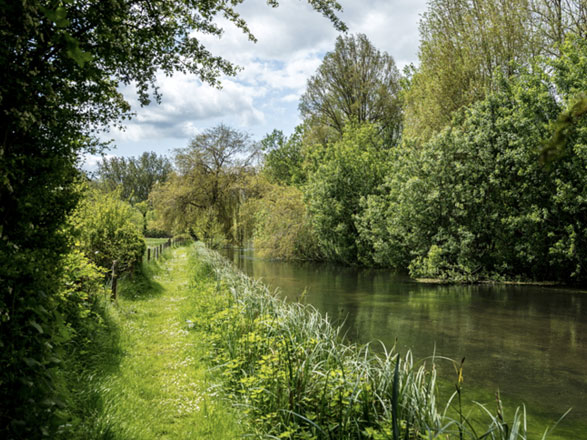
Thank you to the Hungerford Virtual Museum, Wikipedia and E L Davies’ book ‘The Story of an Ancient Fishery’ for much of this information.

